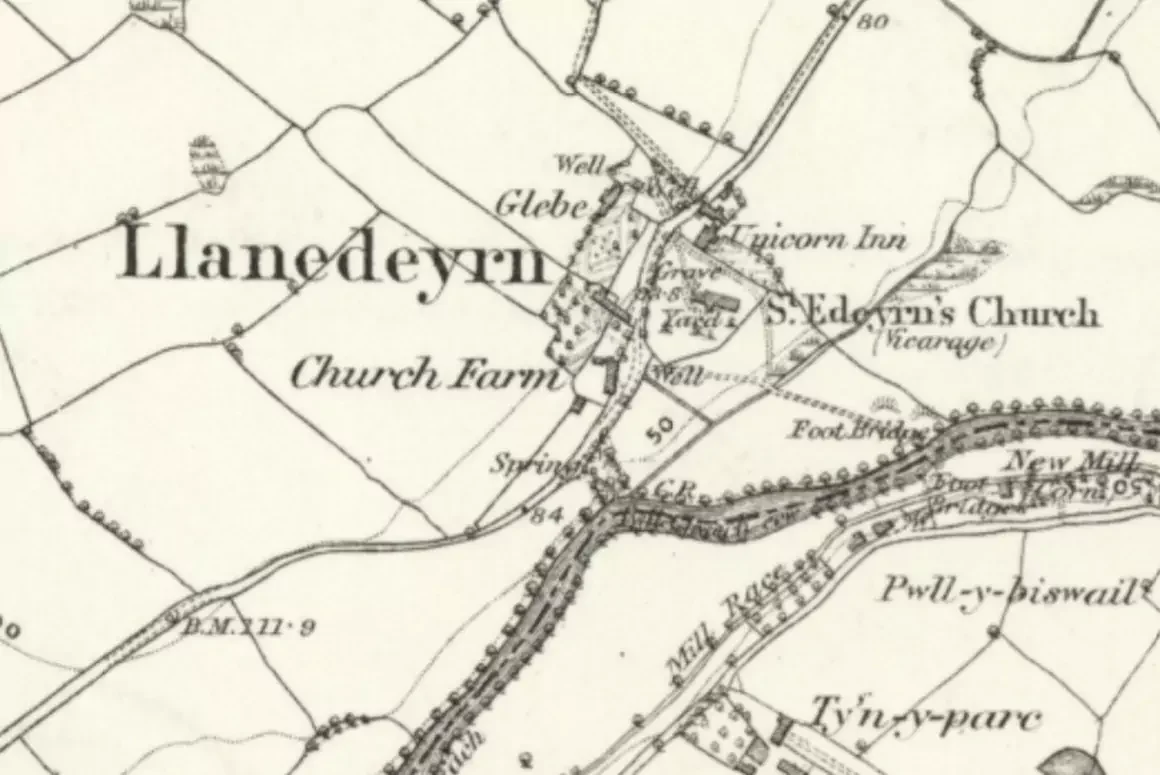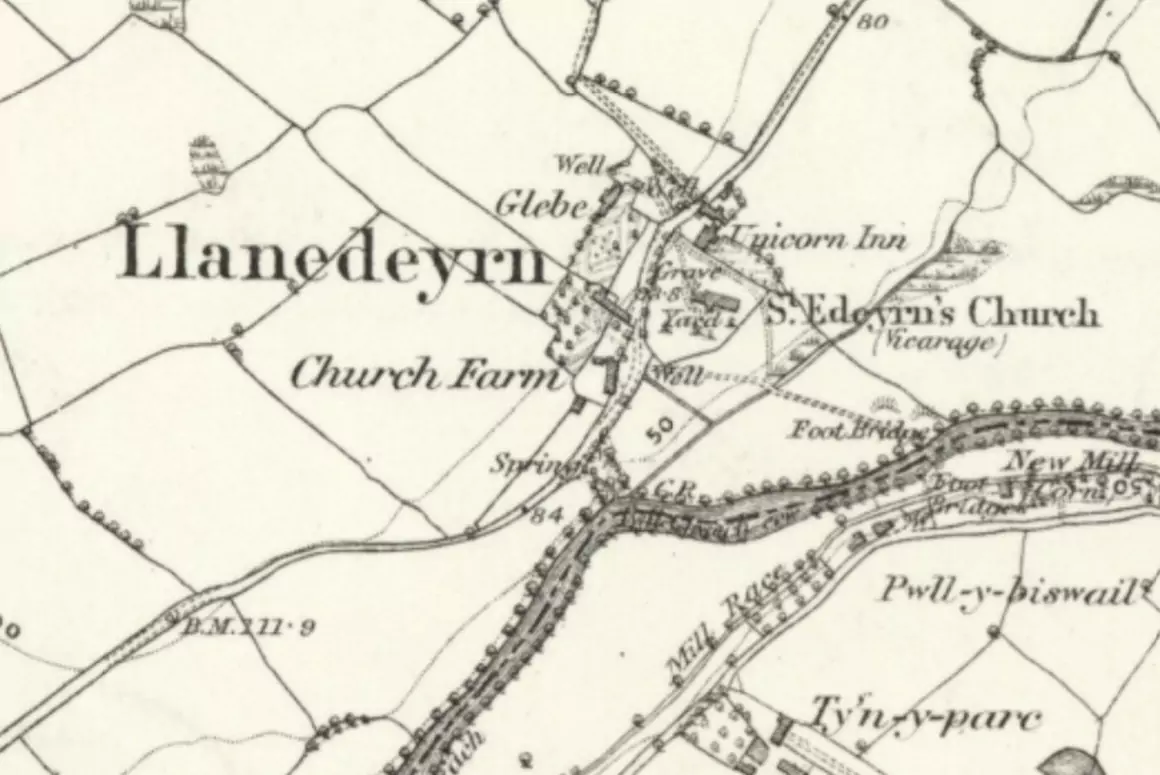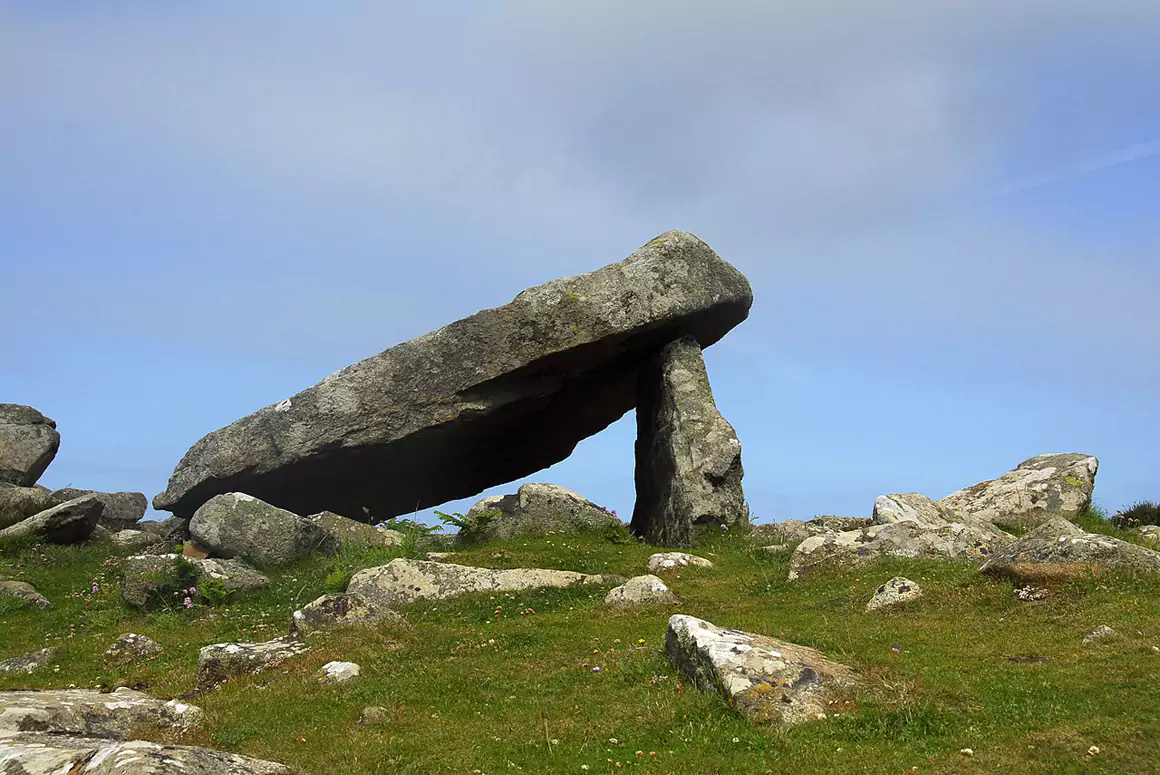Under the feudal system the manor lands consisted of the lord’s demesne and the lands of the tenants. In addition there were woodlands, commons and wastelands which provided wood, turves and pasture for cattle. The change to money rents, the growth of hired labour, the sale of produce and the extension of leasing all combined to hasten the decay of the feudal system. This would seem to account for John, son of Richard de Sutton, Lord of Malpas, holding land and collecting rents in Llanedeyrn.
By the 16thC most men had gained their freedom, however a quit rent claim for land in Llanedeyrn owned by the Kemeys family shows that the old ways lingered on. Graig y Llwyn, high up on the ridge in the north of the parish is the only farm known to belong to the Kemeys family from 1650 together with Cae Sir Howell, a small area of meadowland. Ty Coch (south of Hollybush Road) seems to have belonged to the Kemeys family since 1702.
In his list of things necessary for a good farm or dairy, Randall Holmes (c 1688) listed items for use in the barn, in the stable, in the cow house, in the cart shed and in the farmer’s house. These included digging tools, shovels, spades, pickaxes and mattocks, various kinds of weeding tools, tools for cutting scythes, sickles and pruning hooks, bills saws and hatchets, sharpening and splitting tools, rakes, mauls and forks, flails, winnowing sheets and ladders. In the absence of oxen or horse power, various forms of wheel barrows were necessary.
In the middle ages young cattle were reared on the uplands before being fattened on the pastures in the lowlands. It was this tradition which led to the practice of droving which was at its peak from the 17thC to the coming of the railways. Both cattle and sheep were supplied from Wales. They would walk along traditional routes, grazing at the roadside and in rented pastures as was probable at Cross Farm in Llanedeyrn.
The Kemeys Tynte estates were surveyed by William Jones in 1767 showing their holdings in the parishes of St Mellons, Llanedeyrn and Llanishen. No acreages are given but the map shows 111 tenancies. In Llanedeyrn these included Bridge Farm, Capel y Celin, Church Farm, Cwrt Tregarreg, Y Grose, Malt house Farm, Nant y Draenog, Pentwyn, Pont Brenni, Ty Gwyn, Tytomaen, Tyn y Ffynnon and Farm Shillian from 1788, 13 farms in total.
Between 1798 and 1828 H.A. and J.W. Beiderman of Tetbury in Gloucestershire were the principal land agents on behalf of the Kemeys Tynte family. On 15 July 1803 H.A. Beiderman makes reference to the rebuilding of a stable at Cefn Mabli and on 3 Sept the Steward at Cefn Mabli, George Emerson is writing direct to C.J. Kemeys Tynte enclosing a rough sketch for building a stable and coach house for £128. In 1807 H.A.Beiderman is writing to C.K. Kemeys Tynte Snr thanking him for his approval to exchange some lands “which will be a great acquisition to Cefn Mabli”.
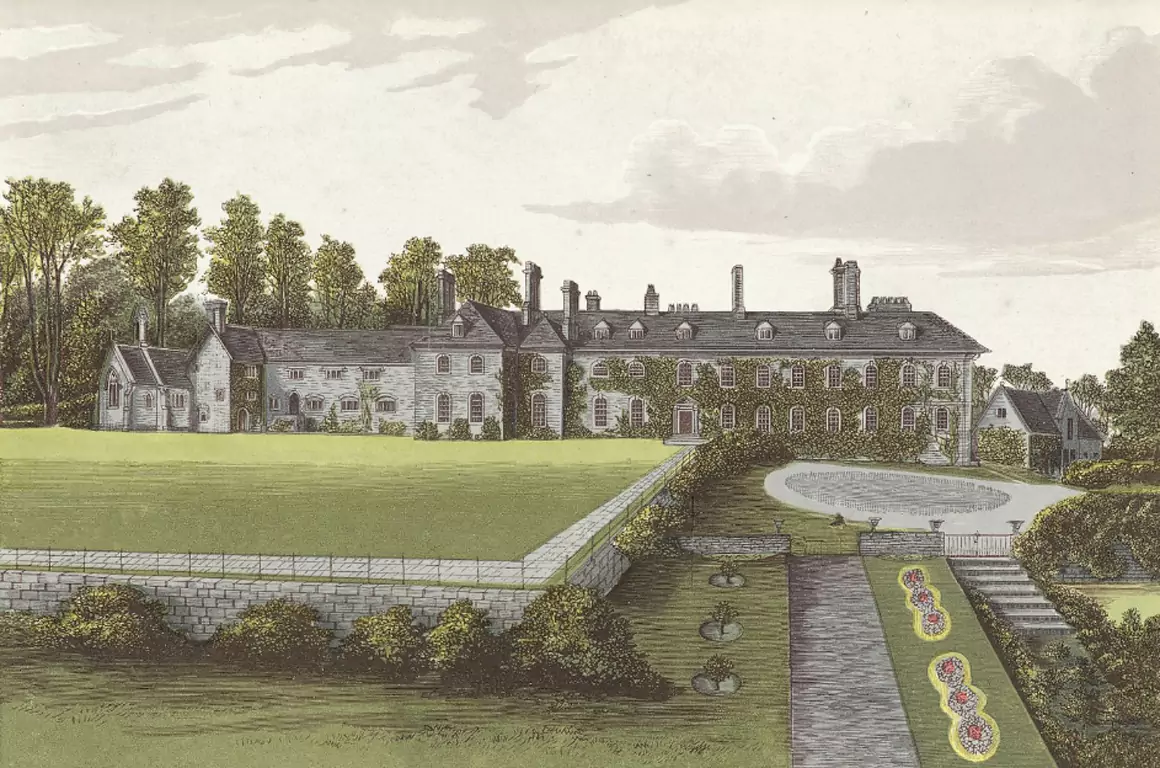
Cefn Mabli House 1860
In Jan 1824 J.W.Beiderman writes to C.J.Kemeys Tynte Snr that “those that had notice to quit, have paid their half years rent and have promised to be punctual in future”. In Feb 1824 he writes again still worried by the uncertainties of being able to collect the rents and in July 1827 he is naming names and commenting “that it is to no purpose letting them go on any longer, and as the crops this year are very good it will be the only time to secure the rent due from them”. Later Beiderman authorizes immediate expenditure on thatching following a severe storm and urges C.K.Kemeys Tynte Snr to improve the land drainage around Cefn Mabli House. Other items refer to the repair of barns, the provision of new stables and a pigs sty (the latter urgent). By 1847 he writes to say that” the greater part of the tenants paid their rents remarkably well at Keven Mably and I have remitted…for Miss Tyntes account £2000”.
In 1801 the Home Office organised a national survey by diocese and parish asking the clergy in each parish to note the acreage devoted to each crop, but were not concerned with pasture or meadowland. Unfortunately the returns for Llanedeyrn are missing but over Wales as a whole oats were grown on 38% of the arable land, barley 29%, and wheat 22%. By comparison, most of the land was used for pastoral farming.
Evidence from the 1844 Tithe Award for Llanedeyrn shows that the 3 most important land owners held 88% of the total acreage, the remaining 12% being divided between 12 small landowners having between 10 and 15 acres each. However these small land owners accounted for 55% (21) of the farms in the parish. Farms of less than 50 acres were generally cultivated by the farmer and his family who were likely to have other occupations. The 19 acres farmed by Thomas Roberts in 1844 supplemented his other occupation as landlord of the Unicorn Inn. Often these small units were absorbed into larger farms, as was the case of Gwern Iddi, which had been amalgamated with Ty Draw Farm by 1844. By 1873 out of a total of 28 farms 9 were under 50 acres in size, 14 were between 51 and 100 acres and 5 between 101 and 300 acres.
Family continuity in tenancies is a feature of large estates and the Cefn Mabli estate is no exception. David Jones held the tenancy of Pant Glas from before 1841 to 1851 by which time he was 80 years old. His son in law Edward Thomas had taken over the tenancy by 1861, and he was succeeded by his own son John Thomas who was still there in 1911. At the time of the sale of the estate in 1920 his wife Ann appears to have purchased the farm and she remained there at least until 1937. The farmhouse was located in North Pentwyn presumably part of the 30 acres of freehold land purchased by Cardiff CC for £200,000 in 1972.
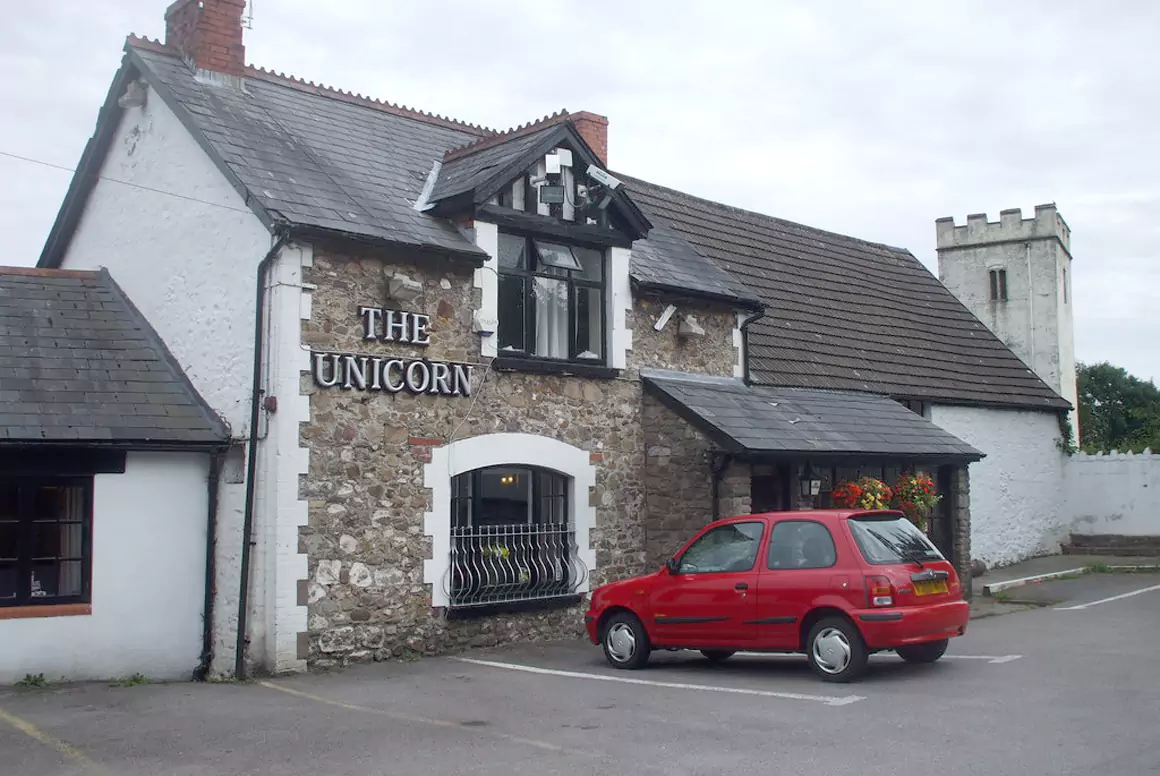
Unicorn Inn, Llanedeyrn in 2010
Following the end of the Napoleonic wars in 1815, agriculture in South Wales was adversely affected by fluctuating wheat prices, wet harvests, and poor crops of potatoes culminating in a disastrous crop in 1846 coinciding with the Irish potato famine between 1845 and 1849. The continuing bad weather and foreign competition led to arable land giving way to grass especially to dairy farming in South Wales. On the basis of the tithe awards arable land accounted for 45% of the farmland on the Cefn Mabli estate between 1839 and 1846. By 1920 this had declined to 29%. Llanedarne Farm was even more dramatic falling from 40% arable land in1844 to having no arable land in 1920.
After a period of rent reduction, rents showed a steady rise between 1850 and 1860 and the growing interest in farm improvement is indicated by the rise in membership of the Glamorgan Agricultural Society from around 100 in 1830 to 350 in 1837. In 1831 64 (94%) of the 66 families in the parish were employed in agriculture either as farmers or as agricultural labourers. Only 3 residents were employed in non-agricultural occupations. By 1841 farmers and agricultural labourers formed 88% of the occupations, but only 14% by 1891.
Cattle were valued for their meat and milk and oxen as draught animals. Improvements of breeds were encouraged by the Agricultural societies. Fox (1794) notes that “towards Pontypool and Newport the dark brown Glamorganshire kind are much esteemed”. Because pigs were kept on a domestic basis, improved breeds did not appear so quickly as with cattle, sheep and horses. In woodland areas common grazing rights often allowed pigs to feed on acorns and beech mast, but in dairy farming areas the fed on whey. By 1920 most farms in Llanedeyrn had a pig’s cot. All the farms had accommodation for horses having 2, 3 or 4 stalls and on the larger farms more than one stable.
Specialised dairy farming is known to have existed in the 17thC with butter and cheese being sent across the Severn estuary to the West of England markets. Eight cowmen lived in the parish in 1861 and 4 Heads of households were described as milk farmers in 1891. With the increasing conversion to dairy farming in the parish, the Kemeys Tynte sale catalogue (1920) itemises cow houses, dairies, calf pens, bull houses and fowl houses. Nineteen farms had cow houses, the largest being at Pentwyn, Tytomaen and Maes y Bryn. Few dairies were separately located in the farmyard. Most farmhouses in Llanedeyrn fad a dairy inside the farmhouse as at Church farm, Gorswg and Bridge farms. Hens were kept for their meat, eggs and feathers and other birds which might be kept were ducks geese and turkeys. Keeping hens under cover was practiced from the 18thC. The Kemeys Tynte sale catalogue (1920) lists pig’s cots with fowl houses above them (for warmth) at Pentwyn, Tytomaen, Tyn y Ffynnon, Cwrt Tregarreg and several other farms in the parish.
Changes in ploughing techniques began in the 18thC, when horses gradually replaced oxen. Improvements were also made to the plough, usually based on the design of the Rotherham Swing plough patented in 1730 which introduced a lighter wooden frame and an improved curved mould board. A similar plough was built by John Aubrey at New Forge, Llanedeyrn and used at Cwrt Tregareg before finding its final resting place at the National History Museum at St Fagans. Cart sheds were found only on the larger farms before the 18thC. Most were open building approached from the side as at the Home farm at Cefn Mabli where the construction was of timber and slate. In Llanedeyrn they were sometimes called wagon sheds, often with a granary on the first floor as at Bridge farm and Pentwyn. Early horse engines were housed in a building adjacent to a barn. Early designs needed 4-6 horses to drive a threshing machine, but with later improvements only 1 or 2 horses would be required. Mobile steam engines came into general use after 1854, and engine driving as an occupation appears in the Llanedeyrn census returns for 1871 and 1891.
This is a previously unpublished research paper authored by the late Malcolm Ranson in 2013. Reproduced by Roath Local History Society, Feb 2025
Images:
Unicorn Inn, Llanedeyrn in 2010 © John Lord (Source – CC BY-SA 2.0)
Cefn Mabli House, National Library of Wales (Public Domain)


